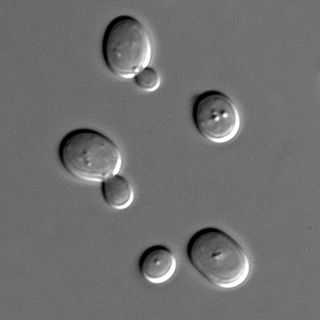Budding

Budding is a form of asexual reproduction in which a new organism develops from an outgrowth or bud due to cell division at one particular site. The new organism remains attached as it grows, separating from the parent organism only when it is mature, leaving behind scar tissue. Since the reproduction is asexual, the newly created organism is a clone and is genetically identical to the parent organism.
Organisms such as hydra use regenerative cells for reproduction in the process of budding. In hydra, a bud develops as an outgrowth due to repeated cell division at one specific site. These buds develop into tiny individuals and when fully mature, detach from the parent body and become new independent individuals.
Internal budding or endodyogeny is a process of asexual reproduction, favoured by parasites such as Toxoplasma gondii. It involves an unusual process in which two daughter cells are produced inside a mother cell, which is then consumed by the offspring prior to their separation.[1]
Endopolygeny is the division into several organisms at once by internal budding.[1]
Animal reproduction

In multicellular animals (metazoans) offspring may develop as outgrowths of the mother. Animals that reproduce by budding include corals, some sponges, some acoel flatworms (e.g. Convolutriloba) and echinoderm larvae.
Cellular budding
Some cells split via budding, for example Saccharomyces cerevisiae, the yeast species used in baking and brewing. This process results in a 'mother' and a smaller 'daughter' cell.
Virology
In virology, budding is a form of viral shedding by which enveloped viruses acquire their external envelope from the host cell membrane, which bulges outwards and encloses the virion.
Plant multiplication
In agriculture and horticulture, budding refers to grafting the bud of one plant onto another.